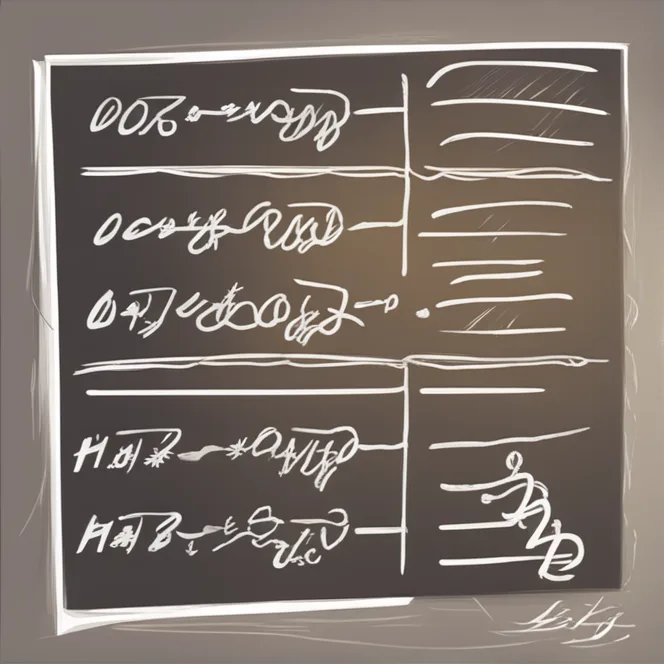
Handwriting As A Mirror To The Soul
Explore the fascinating world of graphology where your handwritten script can reveal the intricacies of your personality.
article by Nora Pennington
Handwriting analysis, or graphology, is the art and science of understanding the psychological traits of an individual through their handwriting style. This method dates back to centuries ago when the first observations about the correlation between a person's writing and their personal features were made. Handwriting analysts scrutinize everything from the size and shape of letters to the pressure exerted on the paper. The unique bends, loops, and strokes are not merely a means of written communication but serve as windows into the writer's soul. Engaging graphology can reveal hidden aspects of character, from levels of confidence to secret inclinations.

The Fundamentals of Handwriting Analysis
The core of handwriting analysis lies in understanding the dynamics of psychological interpretation through graphological features. A handwriting specimen can divulge specific characteristics like emotionality, sociability, and even potential career aptitudes. For instance, large, embellished handwriting may indicate a love for attention, whereas small, concise letters could hint at a focus-driven and meticulous nature. Slanted writing has its interpretations too, with right-slanted script often associated with open, outgoing personalities, and left-slanted writing with introversion. Even the pressure of the writing instrument offers clues—a heavy-handed writer could express emotional intensity, while light pressure might suggest sensitivity or anxiety.

The Application of Graphological Analysis
Graphology is applicable in various domains, such as psychology, forensic investigations, and human resource management. In therapeutic settings, graphology can aid in unveiling subconscious feelings or resolving personal conflicts. In forensics, experts use handwriting analysis to determine the authenticity of documents. Businesses also employ handwriting analysis during recruitment processes to learn more about a candidate's compatibility with a role based on personality traits inferred from their writing style. While not universally accepted as a definitive science, the findings from a graphological study can complement other assessment tools, enriching the understanding of a subject's behavior.

Critical Consideration of Handwriting Styles
Graphology examines numerous elements of handwriting, such as spacing, alignment, and the continuity of letters. Wide spacing between words can signal a desire for freedom or independence, while narrow spacing might denote a tendency to crowd others or a fear of isolation. Alignments also carry weight; lines that ascend suggest optimism, while descending lines could reflect pessimism or fatigue. Consistency in one's writing—whether it's erratic or stable—can further provide a glimpse into the consistency of their thoughts and actions. These nuances collectively build a profile that provides insights into the holistic psychological makeup of the individual.

Debates Surrounding Graphology
While intrigue around handwriting analysis exists, so does skepticism. Critics argue the reliability and validity of graphology, positing that personal biases can distort interpretations and that similar handwriting styles across different individuals may not necessarily translate to similar personality traits. Scientific scrutiny demands empirical evidence, and as such, graphology occupies a contentious space between established psychological practice and that of esoteric interest. However, for many enthusiasts and practitioners, the allure remains undiminished, with ongoing research and case studies serving to bolster the credibility of handwriting analysis within the scientific community.
Embarking on Your Graphological Journey
Diving into graphology can be both illuminating and enriching. Whether it's self-discovery or understanding others better, handwriting analysis provides a unique toolset. It's an invitation to delve deeper beyond surface appearances, exploring the labyrinth of psychological landscapes that reside within each stroke. For those interested in pursuing handwriting analysis further, numerous resources, including books, courses, and professional graphologists, can guide you on this intriguing exploratory path.
Published: 12/8/2023
Modified: 12/8/2023
More predictions
Come back here soon to learn more about yourself and your future


Palmistry & Financial Fortune
In the intricate world of palmistry, the hands serve as windows into our lives, offering glimpses of our character, experiences, and even our financial well-being. While it's essential to approach the topic of wealth with sensitivity and an open mind, many palmists believe that certain indicators on the hand can provide insights into an individual's financial potential. In this exploration of wealth indicators in palmistry, we'll delve into these markers and what they may reveal.


Your Hands Tell A Story: The Journey into Palmistry
Explore the enigmatic world of palm reading to discover if there's truth in the lines of your hands. This article delves into the accuracy and allure of palmistry.


The Accuracy Of Palm Reading: Fact Or Fiction?
Explore the reliability of palm reading in this in-depth analysis. Discover if there's truth behind the lines of your hands or if it's merely a myth.